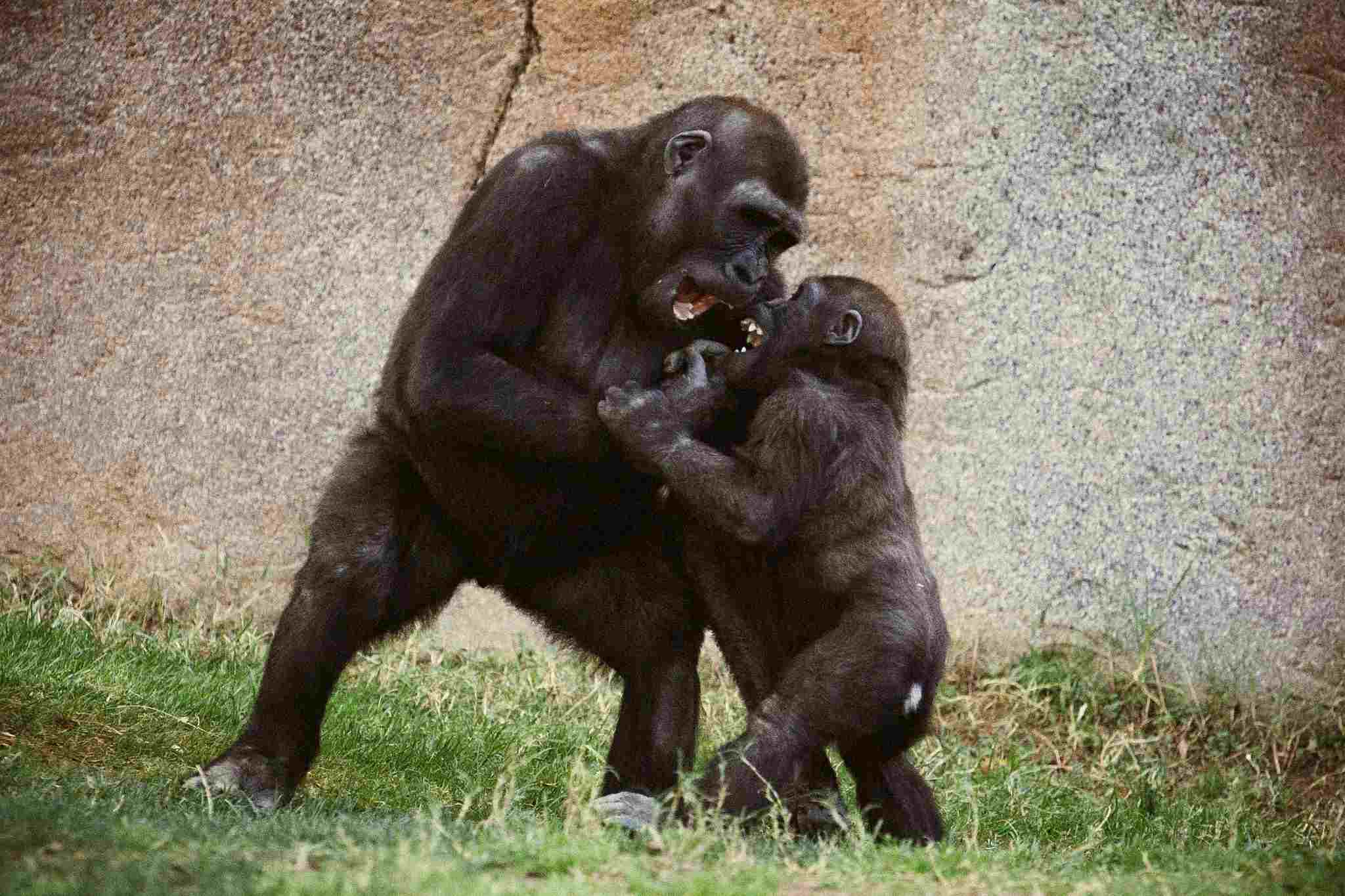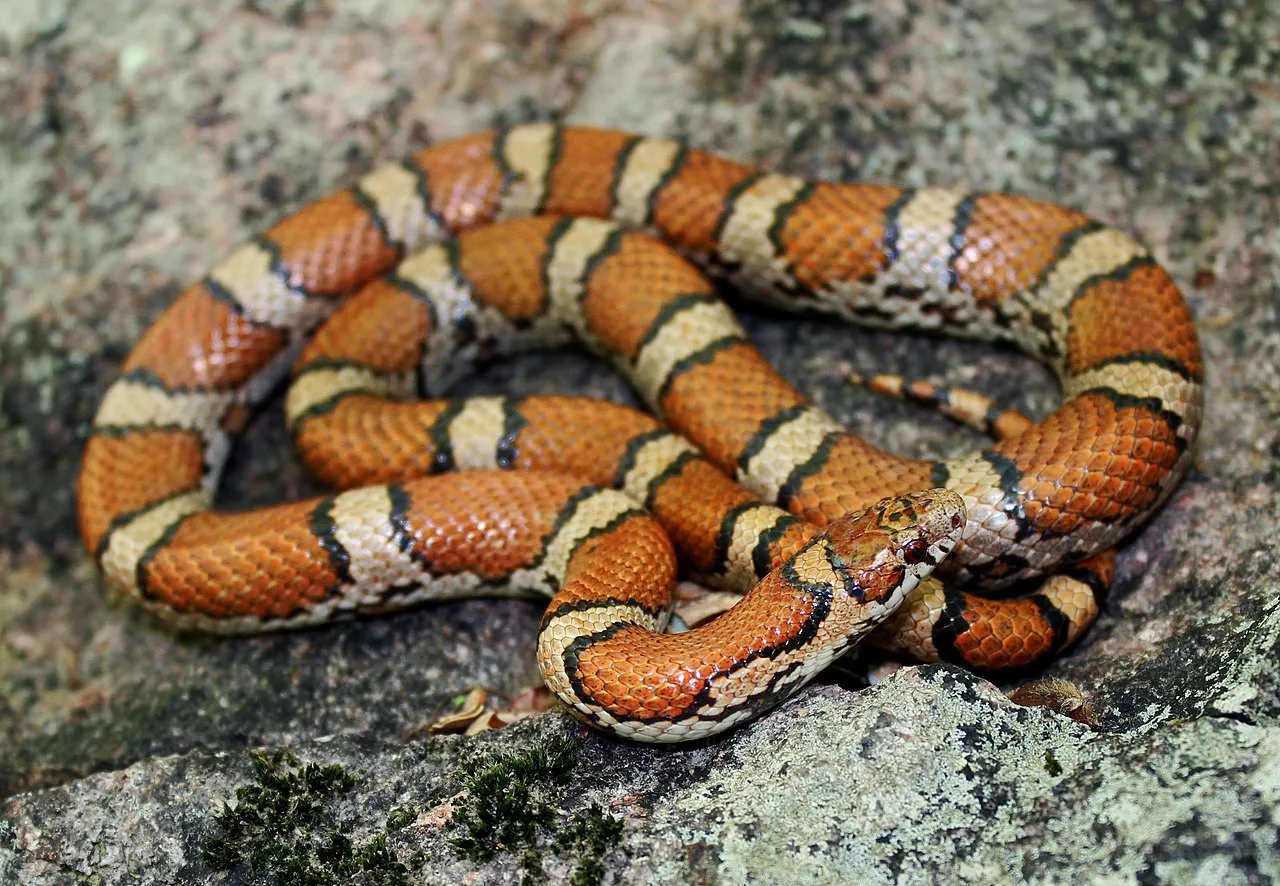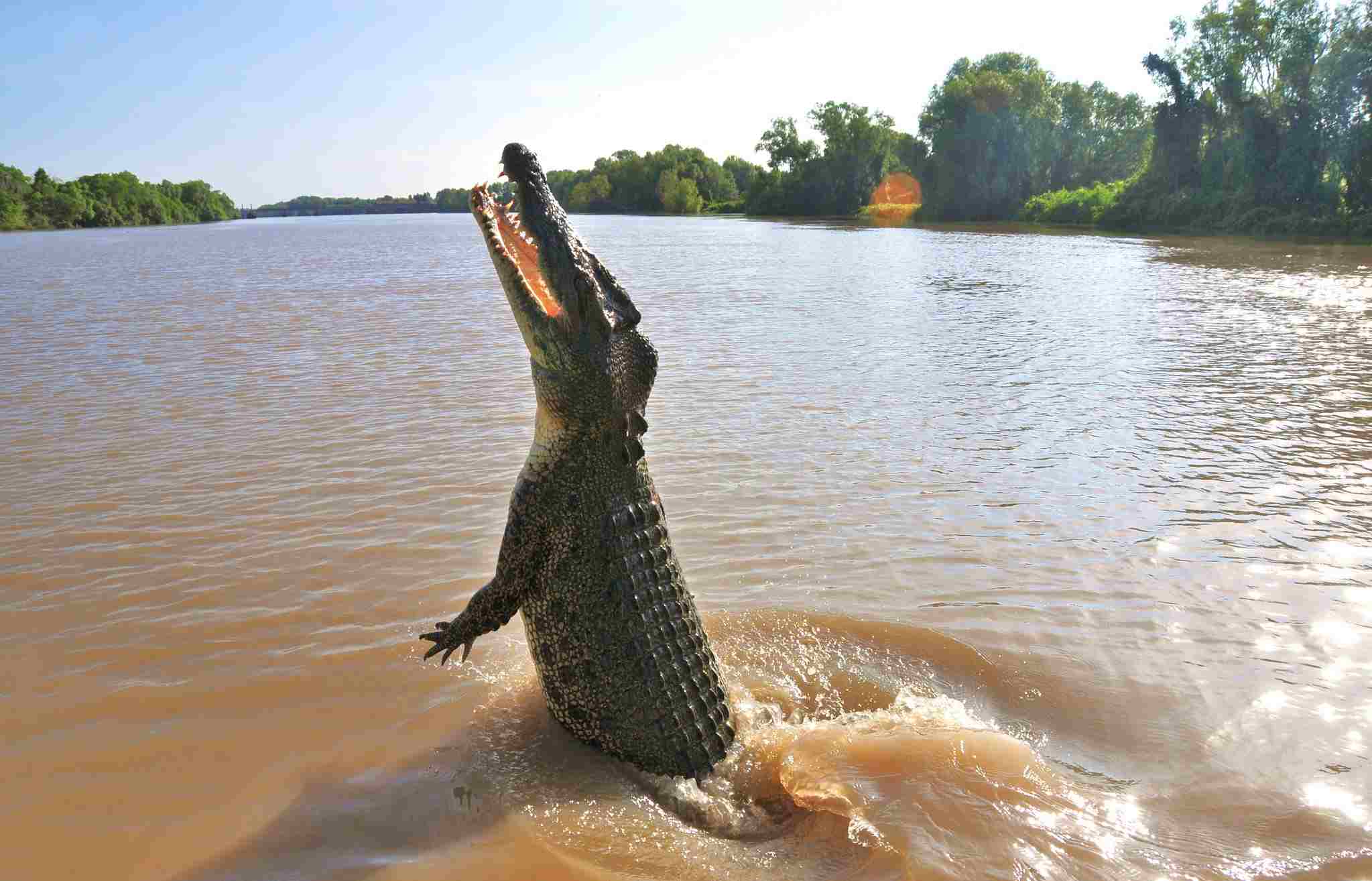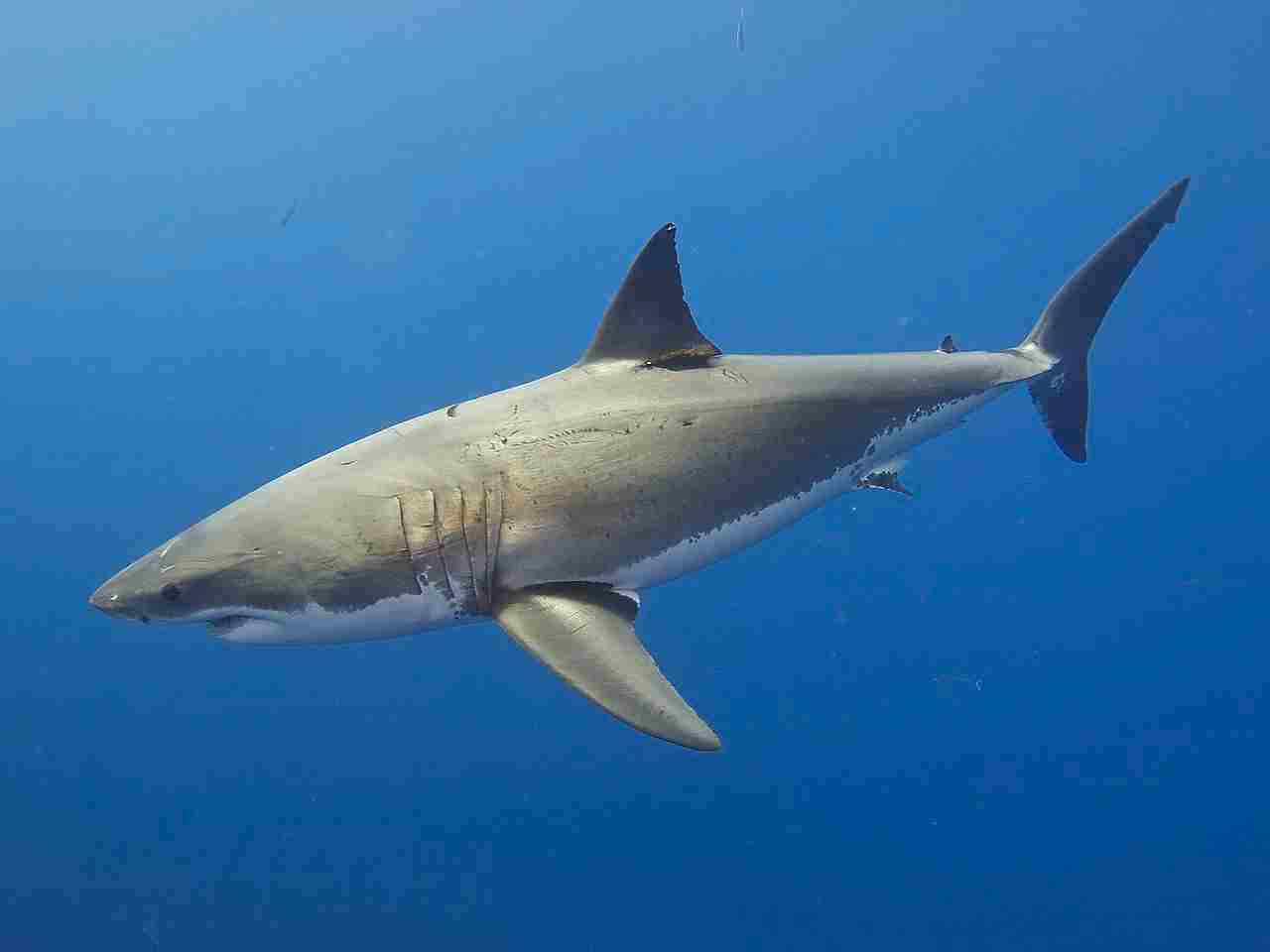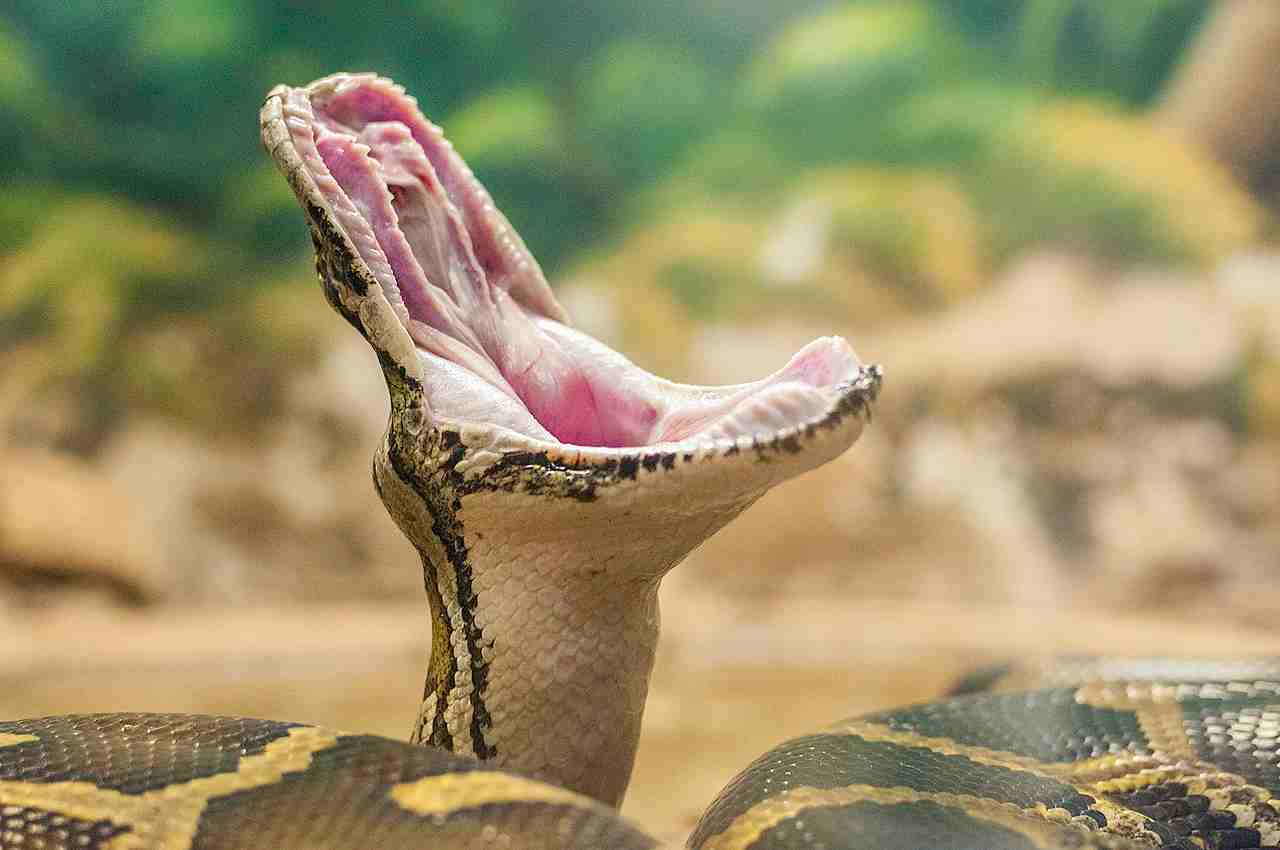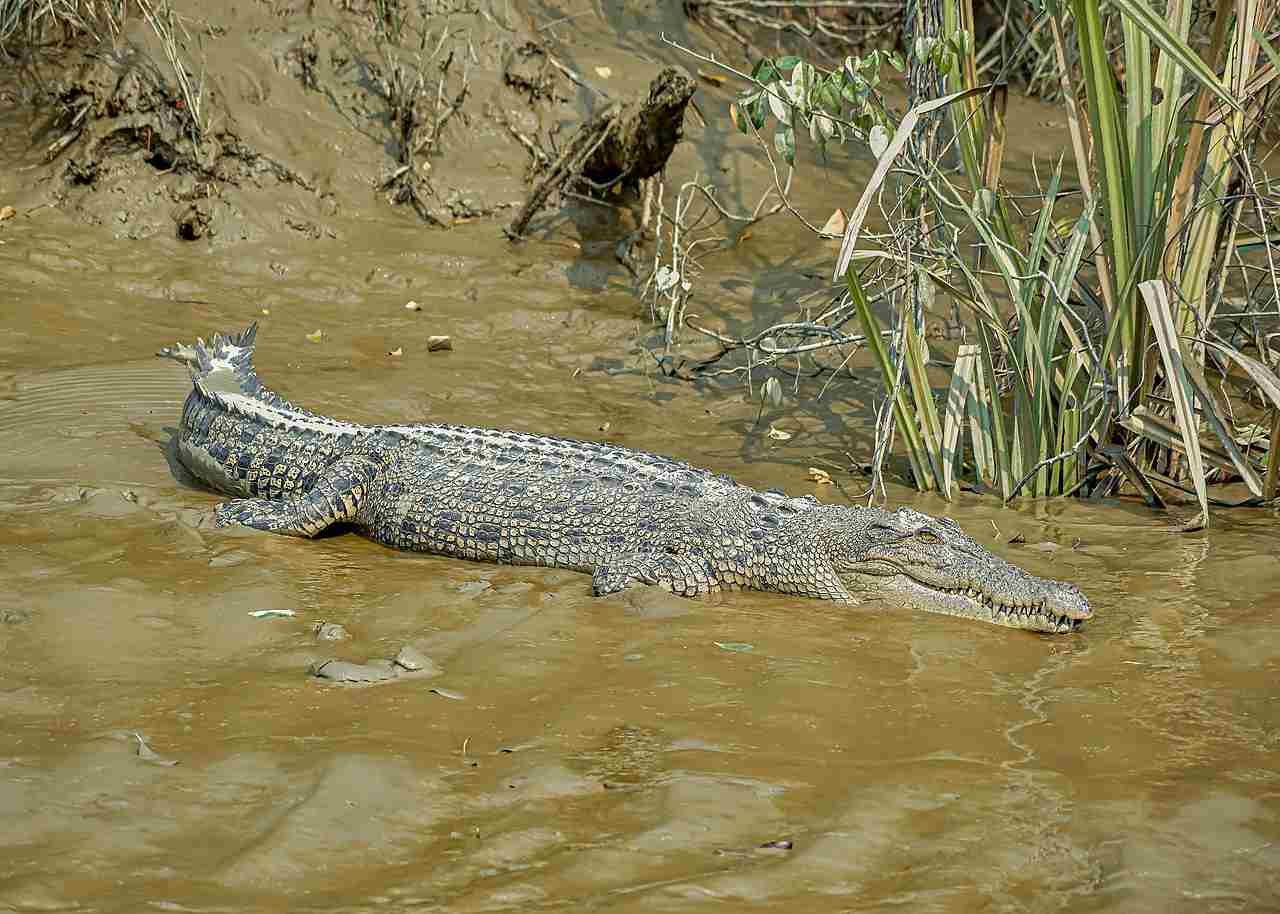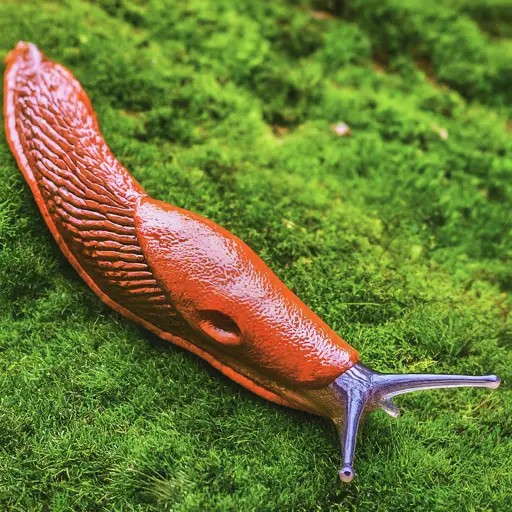31 Most Dangerous Animals In The World And Their Characteristics
The most dangerous animals in the world include the mosquito, which is responsible for transmitting deadly diseases, and the saltwater crocodile, the largest and most aggressive of all crocodile species. Other significant threats include the box jellyfish with its potent venom, the great white shark known for unprovoked attacks, and the African elephant due to its massive size and unpredictability. The inland taipan is considered the most venomous snake, while the golden poison dart frog produces a toxin that can be lethal. These animals demonstrate that danger can come from various sources, including insects, reptiles, birds, and mammals.
1. Mosquito
Mosquitoes may seem small and insignificant, but they are among the most dangerous animals in the world due to their ability to spread deadly diseases. These tiny insects are responsible for transmitting malaria, dengue fever, Zika virus, West Nile virus, and other life-threatening illnesses. With millions of cases reported annually and hundreds of thousands of deaths, particularly in tropical and subtropical regions, mosquitoes pose a significant threat to global public health. Their impact on human populations makes them a key focus for disease control efforts and a reminder that even the smallest creatures can be the deadliest.
2. Saltwater Crocodile
The saltwater crocodile, also known as “salty,” is the largest and most aggressive of all crocodile species, making it one of the most dangerous animals on the planet. Found in Southeast Asia, Australia, and the eastern coast of India, these formidable predators can grow up to 23 feet in length and weigh over a ton. Known for their powerful jaws and aggressive nature, they can attack and kill humans without warning, often in or near water. Saltwater crocodiles are opportunistic predators, and their ability to move quickly on land and swim efficiently in water makes them a constant threat to those who venture into their territory.
3. Box Jellyfish
The box jellyfish, often referred to as the “sea wasp,” is notorious for its extremely potent venom and nearly invisible appearance in the water. Found primarily in the waters of Australia and Southeast Asia, this translucent creature has long tentacles lined with thousands of specialized cells called cnidocytes, which can inject venom into victims with extreme speed. The venom can cause severe pain, cardiac arrest, and even death within minutes. The box jellyfish’s combination of lethal venom, agility, and near-invisibility makes it one of the most dangerous marine creatures.
4. Great White Shark
The great white shark is one of the most feared predators in the ocean, with a reputation that precedes it. Known for its size, which can reach up to 20 feet in length, and its formidable set of sharp teeth, the great white shark is a powerful hunter. Found in coastal regions worldwide, it is responsible for a significant number of unprovoked attacks on humans. Great white sharks often strike with tremendous force and can cause life-threatening injuries in a matter of seconds. Despite their fearsome reputation, great white sharks play a crucial role in maintaining the balance of marine ecosystems.
5. African Elephant
While the African elephant is known for its intelligence and social behavior, it is also considered one of the most dangerous animals due to its immense size and unpredictable nature. Weighing up to 14,000 pounds and standing over 10 feet tall, these elephants can cause massive destruction when they feel threatened or provoked. Human-elephant conflicts often arise when elephants encroach on agricultural areas, leading to aggressive encounters. Although generally peaceful, African elephants can become highly aggressive, charging with tremendous force and causing significant injury or death to those in their path.
6. Cape Buffalo
The Cape buffalo, also known as the African buffalo, is one of the most dangerous animals in Africa, earning its nickname, “the Black Death.” This large herbivore is known for its unpredictable temperament and aggressive behavior, particularly when injured or cornered. Weighing up to 2,000 pounds and featuring massive, curved horns, the Cape buffalo can easily cause significant harm to humans and other animals. Responsible for numerous attacks and deaths in Africa, these animals are not to be underestimated, especially when encountered in the wild or during hunting expeditions.
7. Hippopotamus
Despite their seemingly docile appearance, hippopotamuses are among the deadliest animals in Africa. With massive bodies weighing up to 4,000 pounds and formidable jaws capable of crushing bones, hippos can be extremely aggressive when defending their territory or offspring. They are known to attack boats and can run surprisingly fast on land, making them a significant threat to humans who venture too close. Hippos are responsible for more human deaths in Africa than many other large animals, demonstrating that appearances can be deceiving when it comes to these semi-aquatic giants.
8. Polar Bear
Polar bears are the largest land carnivores, and their immense size and strength make them one of the most dangerous animals in the Arctic. These majestic creatures are adapted to their harsh environment, with thick fur and powerful limbs, allowing them to hunt seals and other prey effectively. Although polar bears typically avoid humans, they can become aggressive when food is scarce or when defending their territory or young. Encounters with polar bears can be deadly, as they are capable of inflicting severe injuries with their massive paws and powerful jaws.
9. King Cobra

The king cobra is the longest venomous snake in the world, reaching lengths of up to 18 feet, and its venom is potent enough to kill an elephant. Native to forests in Southeast Asia and India, king cobras are highly aggressive when threatened, rearing up and spreading their distinctive hoods as a warning. Their venom attacks the nervous system, leading to paralysis and respiratory failure. Despite their fearsome reputation, king cobras generally avoid human contact, but their presence in human-populated areas poses a significant risk due to their lethal venom and aggressive behavior.
10. Black Mamba
The black mamba is one of the deadliest snakes in the world, renowned for its speed, aggression, and highly toxic venom. Native to sub-Saharan Africa, this snake can grow up to 14 feet long and is known for its swift movements, capable of reaching speeds of up to 12 miles per hour. The black mamba’s venom contains neurotoxins that can cause paralysis and death within hours if not treated promptly. The snake’s aggressive behavior, combined with its lethal venom and speed, makes it a formidable threat to humans and animals in its native range.
11. Komodo Dragon
The Komodo dragon, the world’s largest lizard, is a formidable predator native to the Indonesian islands of Komodo, Rinca, and a few others. Growing up to 10 feet in length and weighing over 150 pounds, these reptiles are known for their powerful bodies and sharp claws. The Komodo dragon’s most dangerous feature, however, is its venomous bite. The venom contains toxic proteins that inhibit blood clotting, causing extreme blood loss and shock in its prey. Although attacks on humans are rare, they can be fatal, making the Komodo dragon one of the most dangerous reptiles on Earth.
12. Bull Shark
The bull shark is a highly aggressive species known for its adaptability to both saltwater and freshwater environments. Found in coastal waters and river systems worldwide, the bull shark is responsible for numerous attacks on humans, often in murky waters where visibility is low. It has a robust body and powerful jaws, capable of delivering devastating bites. The bull shark’s aggressive behavior, combined with its ability to thrive in various habitats, makes it one of the most dangerous shark species, posing a threat to swimmers, surfers, and divers in many regions.
13. Blue-ringed Octopus
The blue-ringed octopus is a small but extremely venomous cephalopod found in the coastal waters of Australia and Southeast Asia. Although only a few inches in diameter, this octopus is known for its striking blue-ringed patterns and potent venom containing tetrodotoxin, a neurotoxin that can cause paralysis and respiratory failure within minutes. Despite its small size, the blue-ringed octopus can be deadly to humans if handled or provoked. Its venom has no known antidote, making it one of the most dangerous marine creatures in its range.
14. Pufferfish
The pufferfish, also known as the blowfish or fugu, is a unique sea creature capable of inflating its body as a defense mechanism. However, its most dangerous feature is its toxic flesh, containing tetrodotoxin, a potent neurotoxin that is lethal to humans in small doses. Found in tropical and subtropical waters, pufferfish are considered a delicacy in some cultures, particularly in Japan, where fugu is prepared by specially trained chefs. Despite its culinary appeal, improper preparation can lead to severe poisoning or death, making the pufferfish one of the most dangerous animals to consume.
15. Cone Snail
The cone snail is a small but deadly marine mollusk found in tropical waters worldwide. Although they may seem harmless due to their size and intricate shells, cone snails possess a specialized harpoon-like tooth capable of injecting venom into their prey or attackers. This venom contains powerful neurotoxins that can cause paralysis and respiratory failure, often leading to death. Cone snails are often found in shallow waters and beaches, making them a hidden threat to swimmers and beachgoers. Because there is no known antidote for their venom, these snails are among the most dangerous creatures in the ocean.
16. Brazilian Wandering Spider
The Brazilian wandering spider, also known as the armed spider or banana spider, is one of the most venomous spiders in the world. Native to Central and South America, particularly Brazil, this spider is notorious for its aggressive behavior and potent venom. It is called “wandering” because it actively moves around rather than building webs, often hiding in clothing or banana bunches. Its venom contains neurotoxins that can cause severe pain, paralysis, and respiratory failure. Given its unpredictable behavior and dangerous venom, the Brazilian wandering spider is considered a significant threat to humans.
17. African Lion
The African lion is a majestic predator known for its strength and courage, but it is also among the most dangerous animals in Africa. With powerful jaws and sharp claws, these big cats can easily overpower prey and humans. While lions typically hunt in packs and prefer to avoid humans, conflicts occur when their habitat is encroached upon or when humans venture into their territory. In some cases, rogue lions have been known to attack humans, causing severe injuries or death. Despite their beauty, African lions are formidable predators and demand respect when encountered in the wild.
18. Grizzly Bear
Grizzly bears are among the largest and most powerful bear species, making them one of the most dangerous animals in North America. Found in the forests and mountains of western North America, these bears can weigh over 1,000 pounds and possess immense strength. Grizzlies are generally reclusive but can become aggressive when surprised, defending their cubs or territory. With their powerful jaws and sharp claws, they can inflict severe injuries or cause death within minutes. Grizzly bear encounters are relatively rare, but when they occur, they can be extremely dangerous.
19. Tiger
Tigers are the largest members of the cat family and among the most formidable predators on Earth. Found in Asia, tigers are known for their strength, agility, and striking orange-and-black striped coats. Despite their beauty, tigers are powerful hunters, capable of taking down large prey and defending their territory aggressively. In some regions, tigers are known to attack humans, often due to habitat loss and encroachment on their territory. These attacks can be fatal, making tigers one of the most dangerous big cats. The balance between tiger conservation and human safety is an ongoing challenge in many regions.
20. Golden Poison Dart Frog
The golden poison dart frog is one of the most venomous creatures on Earth, despite its small size and vibrant coloration. Found in the rainforests of Colombia, this tiny amphibian produces a potent toxin called batrachotoxin, which can be lethal to humans and other animals in even minute quantities. Indigenous people have historically used the frog’s toxins to coat the tips of blow darts for hunting, giving the frog its name. Although they are small and seemingly harmless, golden poison dart frogs are among the most dangerous animals due to their potent venom and vibrant warning coloration.
21. Tsetse Fly
The tsetse fly is one of the most dangerous insects in Africa, known for transmitting trypanosomiasis, commonly known as sleeping sickness. This parasitic disease affects both humans and animals, leading to severe neurological symptoms, coma, and even death if left untreated. Tsetse flies are found in sub-Saharan Africa, particularly in regions with dense vegetation where they can easily find hosts. Their bite can be painful, and they are known for their aggressive feeding behavior. The tsetse fly’s role in spreading sleeping sickness makes it a significant threat to public health in many parts of Africa.
22. Funnel-Web Spider
The funnel-web spider is among the most venomous spiders in the world, primarily found in Australia. Its name comes from the funnel-shaped webs it creates to trap prey. The Sydney funnel-web spider is particularly notorious for its aggressive behavior and potent venom, which can cause severe pain, muscle spasms, and respiratory distress in humans. If not treated promptly with antivenom, funnel-web spider bites can be fatal. Their aggressive nature and venom toxicity make them one of the most dangerous spiders, especially in their native habitat.
23. Stonefish
The stonefish is considered the most venomous fish in the world, known for its excellent camouflage and potent venom. Found in tropical waters of the Indo-Pacific region, the stonefish has spines along its dorsal fin that can inject venom into anyone who steps on or touches it. The venom causes excruciating pain, tissue damage, and potentially life-threatening complications if not treated quickly. Because stonefish can blend seamlessly with their surroundings, they pose a significant risk to divers, swimmers, and beachgoers who may accidentally step on them.
24. Killer Whale (Orca)
The killer whale, or orca, is the largest member of the dolphin family and one of the ocean’s top predators. Despite their name, killer whales rarely attack humans in the wild; however, their size, strength, and predatory instincts make them potentially dangerous. Found in oceans worldwide, orcas are known for their intelligence, social behavior, and hunting prowess. They can take down large marine mammals, such as seals and whales, with remarkable efficiency. While they are not typically a threat to humans, their sheer power and intelligence mean they must be treated with caution in captivity and the wild.
25. Wolf
Wolves are apex predators and highly social animals, often hunting in packs to take down large prey. Found in North America, Europe, and Asia, wolves play a crucial role in maintaining the balance of their ecosystems. However, they can pose a threat to humans when their habitat is encroached upon or when they feel threatened. While attacks on humans are rare, they do occur, especially when food sources are scarce. Wolves’ pack mentality, strength, and hunting instincts make them formidable predators, and interactions with humans require caution and respect.
26. Honey Badger
The honey badger is a small but fearless carnivore known for its aggressive behavior and resilience. Found in Africa and parts of Asia, this creature has a reputation for attacking predators much larger than itself, such as lions and leopards. Honey badgers are highly adaptable and can dig into the ground or climb trees to find food. They are also known to attack humans when provoked or threatened, showing little fear in the face of danger. Despite their small size, honey badgers’ ferocity and tenacity make them one of the most dangerous animals in their range.
27. Scorpion
Scorpions are arachnids known for their venomous stingers and aggressive behavior when threatened. Found in various environments worldwide, scorpions use their venom to subdue prey and defend themselves from predators. While most scorpion species are not harmful to humans, some, like the deathstalker scorpion, possess venom that can cause severe pain, paralysis, and even death. Scorpions often hide in dark places, such as under rocks or inside shoes, making them a hidden danger to those who encounter them. Their venomous sting and tendency to hide in unexpected places make scorpions one of the most dangerous arthropods.
28. Cheetah
The cheetah is the fastest land animal, capable of reaching speeds of up to 70 miles per hour. Found in Africa, these big cats are known for their speed and agility, which they use to hunt prey. Despite their impressive speed, cheetahs are generally not aggressive toward humans. However, conflicts can arise when cheetahs feel threatened or when their habitat is encroached upon. While attacks on humans are rare, cheetahs’ speed and hunting skills make them potentially dangerous, especially when they are defending their territory or offspring.
29. Cassowary
The cassowary is a large, flightless bird native to Australia and New Guinea, known for its striking appearance and aggressive behavior. With a distinctive blue head, tall casque, and powerful legs, the cassowary is a formidable presence in the rainforest. It is known to defend its territory aggressively, using its sharp claws to attack perceived threats. Cassowary attacks on humans, though rare, can be deadly due to their powerful kicks and sharp talons. Their aggressive nature and ability to inflict serious injuries make cassowaries one of the most dangerous birds in the world.
30. Giant Centipede
The giant centipede, found in tropical regions, is a large arthropod known for its long, segmented body and venomous fangs. These centipedes can grow up to a foot in length and are highly aggressive when threatened. They use their venom to immobilize prey, and their bites can cause severe pain, swelling, and other adverse reactions in humans. Although they typically avoid human contact, giant centipedes can be found in homes and other sheltered areas, posing a threat to those who encounter them. Their venomous bite and aggressive behavior make them one of the most dangerous centipedes.
31. Inland Taipan
The inland taipan, also known as the “fierce snake,” is considered the most venomous snake in the world, with a venom capable of causing death within hours if untreated. Found in the arid regions of central Australia, this snake is relatively shy and reclusive, but its venom contains neurotoxins and hemotoxins that can cause paralysis and internal bleeding. Despite its highly lethal venom, the inland taipan is generally not aggressive toward humans, and bites are rare. However, given its potency, any encounter with this snake can be extremely dangerous, requiring immediate medical attention and antivenom treatment.
| Animal | Description |
| 1. Mosquito |
Transmits diseases like malaria, dengue, and Zika, causing millions of illnesses and hundreds of thousands of deaths annually.
|
| 2. Saltwater Crocodile |
The largest crocodile species, aggressive, and capable of killing humans. Found in Southeast Asia and Australia.
|
| 3. Box Jellyfish |
Known for its potent venom, causing severe pain and potential death within minutes. Found in the waters of Australia and Southeast Asia.
|
| 4. Great White Shark |
Large predator responsible for many unprovoked attacks on humans. Found in coastal regions worldwide.
|
| 5. African Elephant |
Known for size and unpredictability, can cause massive destruction. Found in Africa.
|
| 6. Cape Buffalo |
Aggressive and known for attacking humans, earning the nickname “Black Death.” Found in Africa.
|
| 7. Hippopotamus |
Large and aggressive, causing more human deaths in Africa than many other large animals.
|
| 8. Polar Bear |
The largest land carnivore, capable of inflicting severe injuries. Found in the Arctic.
|
| 9. King Cobra |
The longest venomous snake, with potent venom that can cause paralysis and respiratory failure. Found in Southeast Asia and India.
|
| 10. Black Mamba |
One of the fastest and most venomous snakes, with a highly aggressive nature. Found in sub-Saharan Africa.
|
| 11. Komodo Dragon |
The largest lizard, with a venomous bite that causes severe blood loss. Found in Indonesia.
|
| 12. Bull Shark |
Known for aggression and adaptability to both saltwater and freshwater. Responsible for numerous attacks on humans.
|
| 13. Blue-ringed Octopus |
Small but extremely venomous, causing paralysis and respiratory failure. Found in Australia and Southeast Asia.
|
| 14. Pufferfish |
Contains a potent neurotoxin that is lethal if not prepared properly. Considered a delicacy in some cultures.
|
| 15. Cone Snail |
Small but deadly, with a harpoon-like tooth that injects venom causing paralysis and respiratory failure.
|
| 16. Brazilian Wandering Spider |
Known for its aggressive behavior and potent venom, causing severe pain and paralysis. Found in Central and South America.
|
| 17. African Lion |
Known for its strength and aggressive defense of territory. Found in Africa.
|
| 18. Grizzly Bear |
One of the largest and most powerful bears, with the capability to inflict severe injuries. Found in North America.
|
| 19. Tiger |
The largest cat, known for its strength and aggressive defense of territory. Found in Asia.
|
| 20. Golden Poison Dart Frog |
Produces a potent toxin that can be lethal to humans and other animals. Found in Colombia.
|
| 21. Tsetse Fly |
Transmits sleeping sickness, causing neurological symptoms and potential death. Found in sub-Saharan Africa.
|
| 22. Funnel-Web Spider |
Known for its aggressive behavior and venom that can cause severe pain and respiratory distress. Found in Australia.
|
| 23. Stonefish |
The most venomous fish, with spines that can inject venom causing severe pain and tissue damage.
|
| 24. Killer Whale (Orca) |
The largest member of the dolphin family, powerful and potentially dangerous due to its predatory instincts. Found worldwide.
|
| 25. Wolf |
Apex predators known for their pack hunting behavior and occasional attacks on humans. Found in North America, Europe, and Asia.
|
| 26. Honey Badger |
Known for its aggressive behavior and resilience, often attacking much larger predators. Found in Africa and parts of Asia.
|
| 27. Scorpion |
Known for its venomous stingers and aggressive behavior when threatened. Found worldwide.
|
| 28. Cheetah |
The fastest land animal, generally not aggressive toward humans, but potentially dangerous when defending territory. Found in Africa.
|
| 29. Cassowary |
A large flightless bird with aggressive behavior and sharp claws. Found in Australia and New Guinea.
|
| 30. Giant Centipede |
A large arthropod known for its venomous fangs and aggressive behavior when threatened. Found in tropical regions.
|
| 31. Inland Taipan |
The most venomous snake, with venom that can cause paralysis and internal bleeding. Found in Australia.
|

